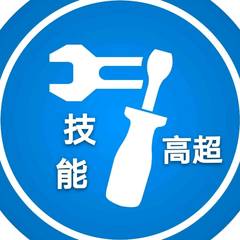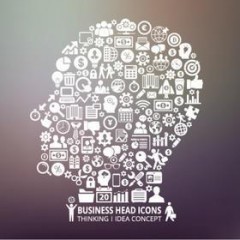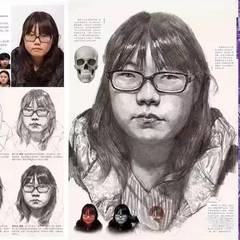CATTI二三笔真题整理分享
2019年11月CATTI二、三笔真题整理翻译硕士考研,下面是根据考生回忆,整理出的部分考试内容,非版本。大家快来看看自己考得怎么样呀?没考的小可爱,也可以趁热感受一下二、三笔的难度~
二笔真题
来源:
一带一路"倡议:实现金融互联互通的两个关键渠道开幕致辞
Sowherethereisfinancialconnection,weseethatrapidimprovementsinqualityoflifecanquicklyfollow.
哪里形成了金融联系,当地的生活质量就会很快改善。
Inourmoderncontext,thereareseveralimportantchannelstoachievingthisgreaterfinancialconnectivity.Iwanttohighlighttwotoday:increasedcapitalmobilityandincreasedfinancialinclusion.
在现代背景下,更深层次的金融互联互通可以通过几个重要渠道来实现。我今天想强调两个渠道:加强资本流动和改善金融包容性。
1.IncreasedCapitalMobility
1.加强资本流动
First,enablingcapitaltoflowmorefreely.
一确保资本更自由地流动。
Allowingcapitaltoflowacrossborderscanhelpsupportinclusivegrowth.How?Byenhancinginvestmentsininfrastructure,manufacturing,andevenhealthcare.
允许资本跨境流动能帮助支持包容性增长。如何支持?通过促进基础设施、制造业甚至医疗行业的投资。
Rightnow,foreigndirectinvestment—FDI—isonly1.9percentofGDPindevelopingcountries.Beforetheglobalfinancialcrisis,itwasat2.5percent.Makingprogressonmajorinfrastructureneedswillrequirecapitalflowstoriseagainandtobemanagedsafely.
目前,发展家的外国直接投资(FDI)仅占GDP的1.9%;而在全球金融危机之前,这个数字是2.5%。为推进主要基础设施建设进展,需要再次增加资本流动规模,并以安全的方式对其进行管理。
Greateropennesstocapitalflowscanalsobringdownthecostoffinance,improvetheefficiencyofthefinancialsector,andallowcapitaltosupportproductiveinvestmentsandnewjobs.
对资本流动更加开放也能降低融资成本,提高金融部门效率,允许资本支持生产性投资和新增就业。
Thankfully,weknowfromexperiencetheelementsthatarerequiredforsuccess.Theseincludesoundfinancialregulation,transparentrulesforinvestment,andattentiontofiscalsustainability.
幸运的是,我们从经验中获悉了成功所需的要素,包括完善的金融、透明的投资规则以及关注财政可持续性。
2.IncreasedFinancialInclusion
2.改善金融包容性
Wealsoneedincreasedfinancialinclusion—mysecondchannelforamoreeffectiveBRI.
我们还需要改善金融包容性,这是我认为提升一带一路"倡议有效性的第二个渠道。
Afewnumbers:closetohalfoftheadultpopu-lationinlowandmiddle-incomeAsia-Pacificeconomiesdonothaveabankaccount.Lessthan10percenthaveeverborrowedfromafinancialinstitution.
这里列举几个数字:亚太地区中低收入经济体近一半的成年人口没有银行账户。曾向金融机构借款的人口比重不到10%。
Andyet,weknowthatclosingthefinancegapisaneconomicmust-have"fornationstothriveinthe21stcentury.IMFanalysisshowsthatiftheleastfinanciallyinclusivecountriesinAsianarrowedthefinancegaptothelevelofThailand—anemergingmarketeconomy—thepovertyrateinthosecountriescouldbereducedbynearly4percent.
然而我们知道,各国若要在21世纪繁荣发展,弥合金融缺口是一项必须完成的经济任务"。国际货币基金组织的分析表明,如果亚洲金融包容性弱的国家将金融缺口缩窄至泰国(一个新兴市场经济体)的水平,这些国家的贫困率能降低近4%。
Howcanwegetthere?Inpart,throughpoliciesthatenablemorewomenandruralcitizenstoaccessfinancialservices.Thefinancialgendergapforwomenindevelopingcountriesisabout9percentandhasremainedlargelyunchangedsince2011。
如何实现这一目标?一方面,制定能使更多妇女和农村居民获得金融服务的政策。在发展家,妇女面临的金融性别缺口约为9%,且自2011年来基本保持不变。
Thereisnosilverbullet,butweknowthatfintechcanplayacatalyzingrole.
这个问题没有根治的良方,但我们知道金融科技能发挥催化作用。
InCambodia,forexample,strongpublic-privatepartnershipsinsupportingmobilefinancehasledtoatriplinginthenumberofmicro-financialinstitutionssince2011.Theseinstitutionshavenowprovidedloanstoover2millionnewborrowers,representingnearly20percentoftheadultpopulation.Manyofthesecitizenshadneverhadabankaccount.Nowtheycansaveforthefutureandperhapsevenstartabusinessoftheirown.
例如,柬埔寨通过强有力的公私合作关系支持移动金融发展,自2011年来监控金融机构的数量增加了两倍。目前,这些机构已向200多万个新借款者提供贷款,占成年人口的比重接近20%,这些公民很多从未开立银行账户。现在,他们可以通过储蓄规划未来,甚至也许可以自行创业。
Theseareideasthatcanworkeverywhere.Butcountrieshavetobewillingtopartnerandlearnfromeachother.
这些理念适用于所有国家,但这些国家必须有意愿开展合作并相互学习。
ThatisoneofthemajorreasonswhylastOctober,theIMFandWorldBanklaunchedtheBaliFintechAgenda.Theagendalaysoutkeyprinciples—fromdevelopingfinancialmarketstosafeguardingfinancialintegrity—thatcanhelpeachnationasitstrivesforgreaterfinancialinclusion.
这就是国际货币基金组织和世界银行去年10月启动巴厘岛金融科技议程"的主要原因之一。该议程阐述的核心原则——从发展金融市场到维护金融诚信——能帮助所有国家,因为其旨在改善金融包容性。
三笔真题
英译汉
来源:(考试部分有所改动)
https://en.unesco.org/themes/protecting-our-heritage-and-fostering-creativity
ProtectingOurHeritageandFosteringCreativity
Intoday'sinterconnectedworld,culture‘spowertotransformsocietiesisclear.Itsdiversemanifestations—fromourcherishedhistoricmonumentsandmuseumstotraditionalpracticesandcontemporaryartformsenrich—oureverydaylivesincountlessways.Heritageconstitutesasourceofidentityandcohesionforcommunitiesdisruptedbybewilderingchangeandeconomicinstability.Creativitycontributestobuildingopen,inclusiveandpluralisticsocieties.Bothheritageandcreativitylaythefoundationsforvibrant,innovativeandprosperousknowledgesocieties.
Cultureiswhoweareandwhatshapesouridentity.InSeptember2015theUnitedNationsGeneralAssemblyadoptedthesustainablegoals.UNESCOensuresthattheroleofcultureisrecognizedthroughamajorityoftheSustainableDevelopmentGoals(SDGs),includingthosefocusingonqualityeducation,sustainablecities,theenvironment,economicgrowth,sustainableconsumptionandproductionpatterns,peacefulandinclusivesocieties,genderequalityandfoodsecurity.
Nodevelopmentcanbesustainablewithoutastrongculturecomponent.Indeedonlyahuman-centeredapproachtodevelopmentbasedonmutualrespectandopendialogueamongculturescanleadtolasting,inclusiveandequitableresults.Yetuntilrecently,culturehasbeenmissingfromthedevelopmentstrategy.
Toensurethatculturetakesitsrightfulplaceindevelopmentstrategiesandprocesses,UNESCOhasadoptedanapproach:itspearheadsworldwideadvocacyforcultureanddevelopment,whileengagingwiththeinternationalcommunitytosetclearpoliciesandlegalframeworksandworkingonthegroundtosupportgovernmentsandlocalstakeholderstosafeguardheritage,strengthencreativeindustriesandencourageculturalpluralism.
Today,creativityisemergingasoneofthemostpromisingwaysforchanginghowweseecities.Whetherbyrevitalizingthelocaleconomy,rethinkingtransportorhousingpolicies,reclaimingurbanspaces,oropeningupnewhorizonsforyoungpeople,creativityisoneofthedrivingforcesbehindurbanpoliciesandinitiatives.Citiesworldwidearefocusingtheirattentionontheculturalandcreativeindustriesasaninspirationfortheirfuture.Thisvisionispromotedbyelectedrepresentativesandcitypolicy-makers,whoseeitasastrategicleverforinnovationwhenitcomestotacklingcontemporaryurbanissues,whetheronaneconomic,socialorenvironmentalfront.Moreimportantly,however,itisavisionsharedbyprofessionalsandcitizens,whoaretakingactionintheirownneighborhoodsandcommunitiestobuildmoresustainableandmorehumancities.
ThisvisionofcreativeurbangovernanceisthedrivingforcebehindtheUNESCOCreativeCitiesProgrammeandNetwork(联合国教科文组织创意城市网络).Sinceitscreationin2004,theNetworkhasestablisheditselfasastrategicplatformforpromotingandsharingthisnewapproachtosustainablecities.Throughitsstandard-settingandoperationalactions,UNESCOhaspavedthewayfordemonstratingtheessentialroleofcreativityinurbansustainability,assistingnationalandlocalauthoritiesandadvocatingthisvisionataninternationallevel.
Cultureandcreativityplayakeyroleinsustainableurbandevelopment.Theycontributetodiversifyingtheeconomyandgeneratingjobsbuttheyalsoenhancethequalityoflifeofcitizensbyparticipatingtoacity’ssocialstructureandculturaldiversity.
汉译英
选自杭州概况
作为浙江省省会城市,杭州是著名历史文化名城。距今约5300多年的良渚文化遗址(位于杭州余杭区)是中华文明发祥地之一。
杭州以美丽的山水著称于世。古代谚语上有天堂,下有苏杭"表达出古往今来人们对于这座美丽城市的由衷喜爱。位于杭州西南的西湖,以其秀丽的湖光山色和众多名胜古迹而成为闻名中外的旅游胜城,2011年被正式列入《世界遗产名录》。此外,气势浩荡的钱江大潮,每年吸引无数游客。
杭州拥有丰富的历史文化遗迹。南起杭州,北到北京的京杭大运河始建于1631年(原文为1631年),全长约1797公里,是世界上长、古老的人工水道。2014年6月22日,京杭大运河正式入选《世界遗产名录》。
在世界上,杭州也颇具有知名度。13世纪,意大利著名旅行家马可·波罗(MarcoPolo)在游记中赞叹杭州为世界上美丽之城"。2011年,杭州曾被美国《》评为全球41个旅游城市之一,被联合国评为国际花园城市"。
杭州还曾在中美建交过程中扮演重要角色,2015年1月,提出发展旅游外交"。杭州作为著名旅游城市,又率先实践旅游外交"。
猜你喜欢内容
-
安装专业有哪些
安装工程是一个广泛领域,涵盖了多个专业方向,确保工程从设计到施工再到设备供应的顺利进行。以下是一...
-
如何考培训师资格证
要考取培训师资格证,您可以遵循以下步骤:国内流行的培训师资格证包括国家职业资格证、企业内部认证和...
-
语文相近专业有哪些
语文相近的专业主要包括以下几类:研究中国语言的词语、句法,赏析古今诗歌、散文、小说等文学作品,并...
-
工程专业类型有哪些
工程类专业是一个广泛且多样化的领域,涵盖了从基础设施建设到高端技术应用的多个方面。以下是一些主要...
-
永川中职有哪些专业
永川中职学校开设的专业相当丰富,涵盖了多个领域,以满足不同学生的兴趣和职业规划。以下是一些主要的...
-
非学生如何考英语四六级
非学生想要考取英语四级(CET-4),有以下几种途径可以考虑:非在校生可以通过社会考生身份报名参加英语...
-
幼师资格证跳舞怎么考
要考取舞蹈幼师资格证,您可以按照以下步骤进行:年龄要求:通常要求16岁以上。学历要求:大专及以上学...
-
船员驾驶员资格证怎么考
要考取船员驾驶员资格证,需要遵循以下步骤:首先,需要到船员服务部进行为期三天的学习,通过学习后参...
-
表演的专业有哪些
学表演的专业主要包括以下几种:培养从事戏剧、电影、电视剧等表演工作的专业人才。艺考内容包括自我介...
-
评审职称专业有哪些
职称评审涉及的专业非常广泛,以下是一些常见的专业类别:土木工程建筑工程机械工程电子工程化学工程计...



























